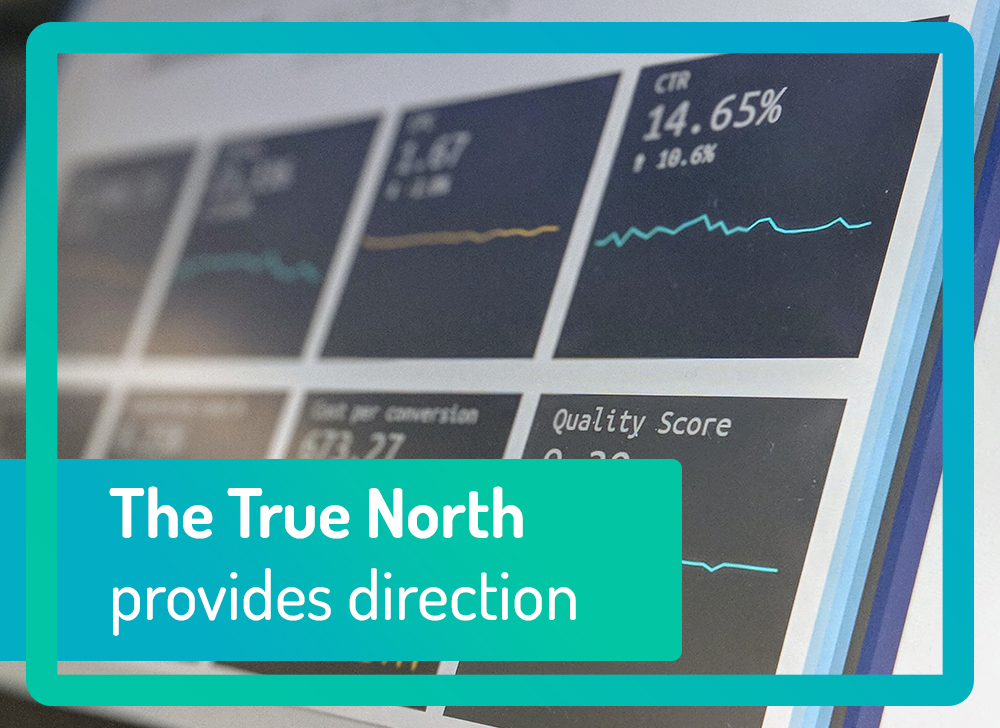Data and Digital Strategy – Part 1

How do you build a data and digital strategy?
Forbes talks in detail about how you can create a digital marketing strategy, which you can read about here. However, this does not apply as directly to the data and digital needs of publishers across the web and apps.
For instance, the first step in building a data and digital strategy is removing all words except strategy. All businesses need a clear and controlled understanding of the business strategy.
So let’s begin, does your business have a strategy? If not, then we probably won’t see you around in the next year or two. Most companies in the digital space refer to a roadmap, a three to five-year plan that outlines how we move from point A to point Z. A roadmap is an overarching view of where the business is, what its end goal will be, and how it will get there. Once this is defined, we can translate the key milestones into digital and data strategies to ensure alignment and that these two functions communicate clearly.
In some already established businesses, business and IT departments may have difficulty aligning their strategies to one another, leading to the two functions working in a manner that can only be described as “out of sync”. As a result, while both these two departments independently seek out their own digital and data transformation, the overall accomplishment of the business strategy suffers.
From a management perspective, this fundamental disconnect must be remedied by identifying what can only be defined as a “True North”. The True North requires the examination of the business’s broader digital ambitions as well as identifying what is commonly known as the data trinity, namely:
- Data use cases that are crucial to the business
- Data assets that power the use cases
- Data and technology architecture that allows for the data assets accessibility.
Figuring out what the True North is can take between 60 to 90 days and is always a time that is very well spent. Defining your True North accelerates a data and digital transformation, helping the company realize its business goals sooner.
Accelerating time to value
For a business to achieve its data and digital transformation goals effectively, practically, and quickly and therefore unleash its full potential, it must match the business strategy to the company’s data assets and architecture. Unfortunately, in many cases, businesses are so constrained by a poor understanding of their data and lack the most vital data capabilities.
Some companies do not understand the value propositions of their data initiatives. They take cautious, incremental steps that slow progress and never meet data maturity goals. Most companies lack the creativity to utilize data to create modernization opportunities. This goes hand-in-hand with a culture that resists adopting data-driven decisions.
Defining a True North allows organizations to remedy a low level of data maturity. By always identifying and prioritizing data use cases, mapping and organizing data assets, and selectively updating architecture, a company evolves its data capabilities, thereby accelerating its data and digital transformation.
Understanding the digital game and how to compete in it

Companies undertaking the journey of data and digital transformation are, in effect, competing in a brand new way. And to do so, they must understand what’s required when rivals already enjoy a high level of data and architecture maturity.
Just understanding the requirements forces many businesses to become inundated with the process. However, this process really does only require 60 to 90 days if done correctly. To speed the process up, these 15 use cases should be used to build the foundation for companies to implement to become major contenders in their industry.
A company must then sequence its foundational use cases based on two considerations: what will provide the most value quickly and continually and what is feasible from a data and architecture point of view. The real art of sequencing is selecting the use cases that should generate results the fastest and simultaneously lay the foundation to grow future use cases.
Correctly sequencing use cases are as crucial for success as implementing data and architecture initiatives. Sequencing will eventually allow a company to move beyond the foundational use cases. The company can then roll out use cases that help differentiate it in the market.
For a clear understanding of how this process helps companies compete, let’s consider the three data elements of the True North in the context of a clothing e-tailer.
Data Use Cases
Part of defining True North, a company needs to map its value chain and identify the use cases that make them possible. Such capabilities serve as springboards for use cases. This unique process allows the company to understand where the value chain’s 10 to 15 foundational use cases belong. Then, the company can sequence the rollout of these use cases.
Let’s take our clothing e-tailer as an example. In its value chain’s selling or marketing stage, the clothing e-tailer decided to list personalization as a top priority use case. This decision will require leveraging the capability it described as promotions and committing to improving it. The realization is that the e-tailer needs internal data to recognize various types of customers and offer them personalized product recommendations to compete at the most basic level. The company must incorporate and interpret customer behavior analytics and integrate external data to differentiate itself using personalization.
Data Assets
Data and digital transformations need to have the very best data. That said, it is common for businesses not to look inwards to understand the data that gives them a sustained and definite competitive advantage. That lack of data maturity hinders their data strategies and business outcomes.
During True North definition, a company must identify the exact data assets it needs to use to fuel its use cases. Our e-tailer began this exercise with a generic list of retail data assets, and they changed it, removing those data assets that were not relevant to clothing e-tailers. They then got a list of data assets that all clothing e-tailers need due to this activity.
With this vital information in hand, the e-tailer started to create a map of where their data assets resided within their company, arranged the data assets into domains that specified ownership of the data assets to avoid gaps or overlaps, and assessed the quality of the assets. Now the e-tailer had all that was required to determine how they could add analytic functions, integrate data sets, and adapt their existing corporate culture to use this newly identified data optimally.
The e-tailers identified company owners then become responsible for these data assets and improving their quality to implement specific use cases. An excellent example of this would be that if the e-tailer decided to proceed with its personalization use case, the company would then need to know where to find the customer’s profile data, such as the order data, stock data, and product and pricing data – and then determine the data’s quality.
The critical step lies here: the e-tailer sequenced the rollout of use cases so that, as much as could be possible, the first wave leveraged and improved data assets that would benefit subsequent use cases, accelerating their deployment and the business impact. In simplified terms, because the use cases were sequenced to the extent they could be, the first wave of use cases improved and benefited use cases coming after.
As a general use case golden rule, the first wave should involve improving about 80% of the data required for all the company’s foundational use cases.
Architecture
The evolution of technology and requirements requires companies to continuously innovate, implement new tech stacks, and move from monolithic to modular architectures to free their data. Likewise, companies must take advantage of new technologies to remain relevant. The beauty of a data and digital platform is that it is an architecture that lowers costs and improves speed and agility by decoupling front-end capabilities from data. This frees data and enables it to be understood and improved by smart business engines using machine learning and artificial intelligence (AI).
A True North assists in achieving the goal of a decoupled architecture; however, it requires selectively updating the architecture. This process requires identifying and mapping the reference architecture needed to access and use the data assets. If we use the example of our trusty e-tailer, mapping the reference architecture meant beginning with a generic retail architecture and changing it to suit all those components that were not relevant to clothing e-tailers (store management, for example). The result was an architecture that fit precisely the purpose and needs of the clothing e-tailer.
Keeping this map in hand, the e-tailer can now understand and compare its current architecture with the architecture necessary to get all the data it requires to gain access to the information it requires. In so doing, it identifies crucial gaps in its existing architecture. Furthermore, our e-tailer needed its websites and web apps to collect customer behavior data. It also needed AI models and other modules to track and collect external data and an analytics platform to analyze the data collected.
When keeping data assets in mind, companies should prioritize and sequence architecture modernization initiatives so that their first wave of architecture upgrades provides the underpinnings for all the upgrades necessary to enable the foundational use cases. It’s crucial to remember that the higher this percentage is, the faster the next waves of use cases can occur, enabling companies to move beyond foundational use cases to differentiating use cases.
The True North provides direction

Throughout this guide, we’ve mentioned the data trinity on how data and digital transformation can be critical for businesses and don’t have to be such a massive stumbling block. By defining our True North and utilizing the data trinity, we are provided with an easy-to-follow guide to accelerate a company’s data and digital transformation for three to five years.
Creating a True North and selecting ten key use cases force a company to identify data assets that give them a competitive advantage. Then the company must harmonize them to ensure their quality. The True North project will also specify requirements for the data platform and overall architecture. Once clearly understood will allow any company a better foundation to support use cases.
Very often, the disconnect between IT and business priorities can be solved by aligning the two sides’ needs, coordinating their initiatives far earlier than is typical today, and considering the organization’s broader ambitions. The use of a True North to align on specific use cases, data projects, and architecture modernization initiatives from day one can ensure that the company doesn’t move in the wrong direction, ultimately accelerating and improving business outcomes.
We hope that you’ve found this read to be a fruitful one, and if you wish to delve deeper into the fascinating world of data and digital strategy across your platforms, be sure to contact us here.








